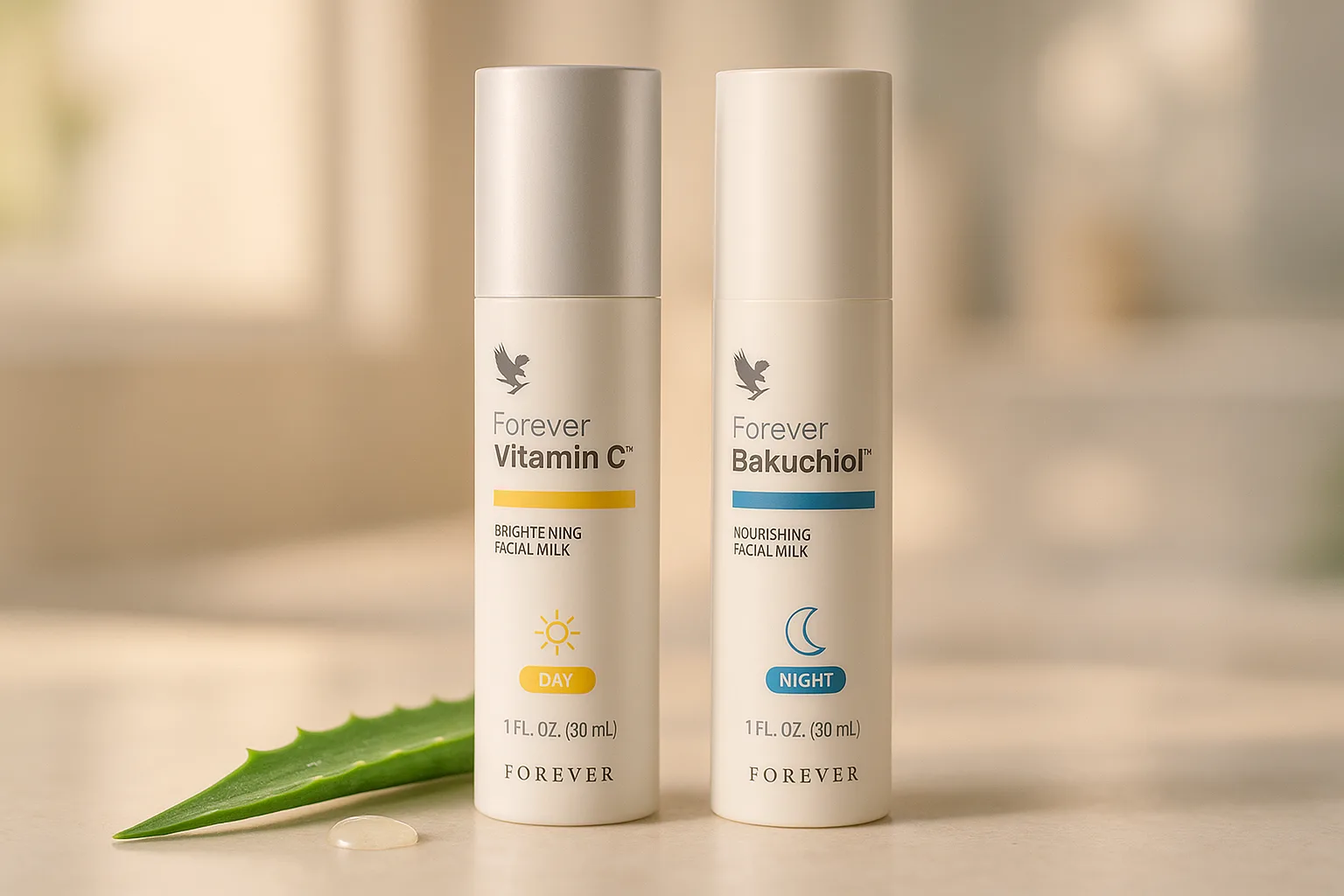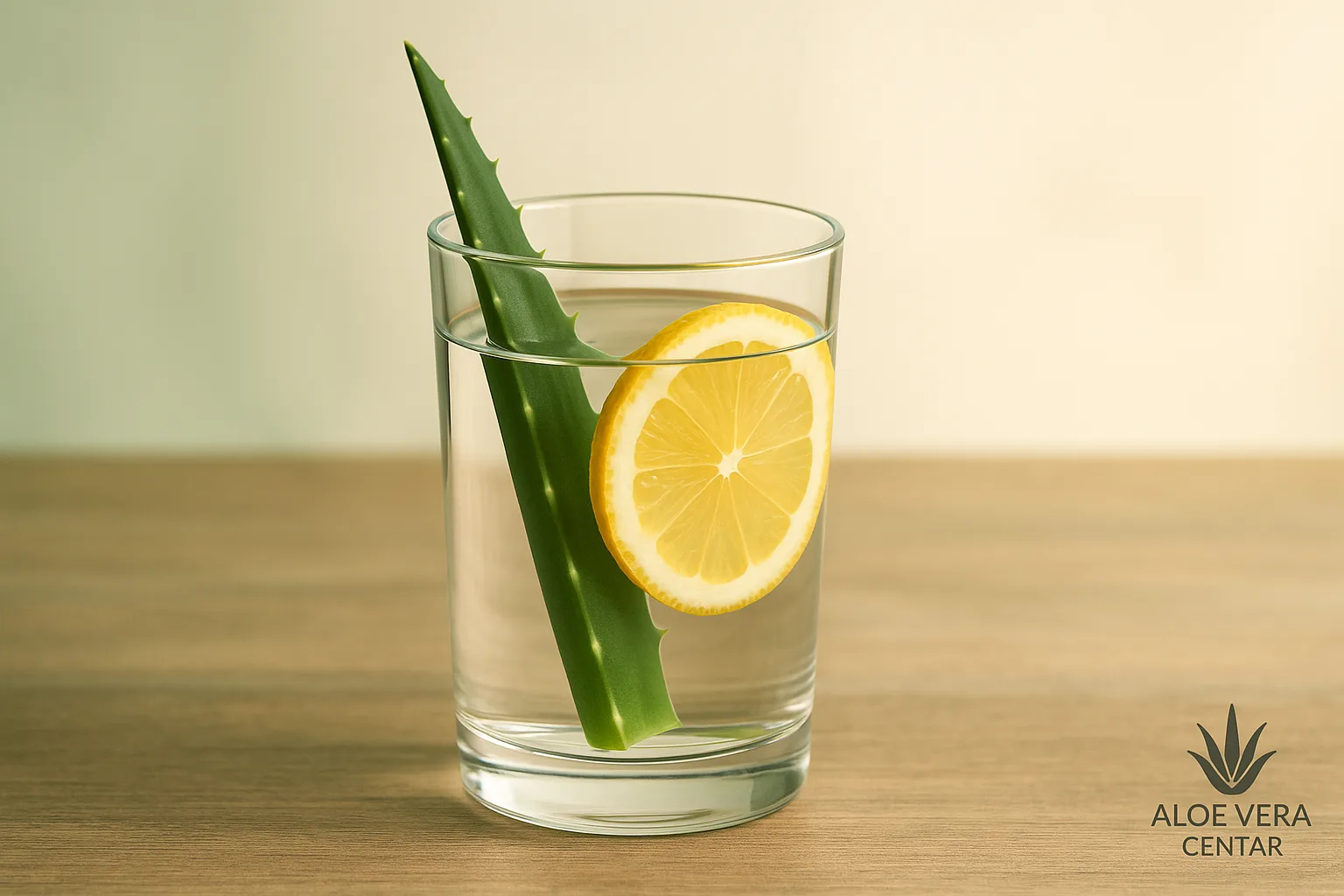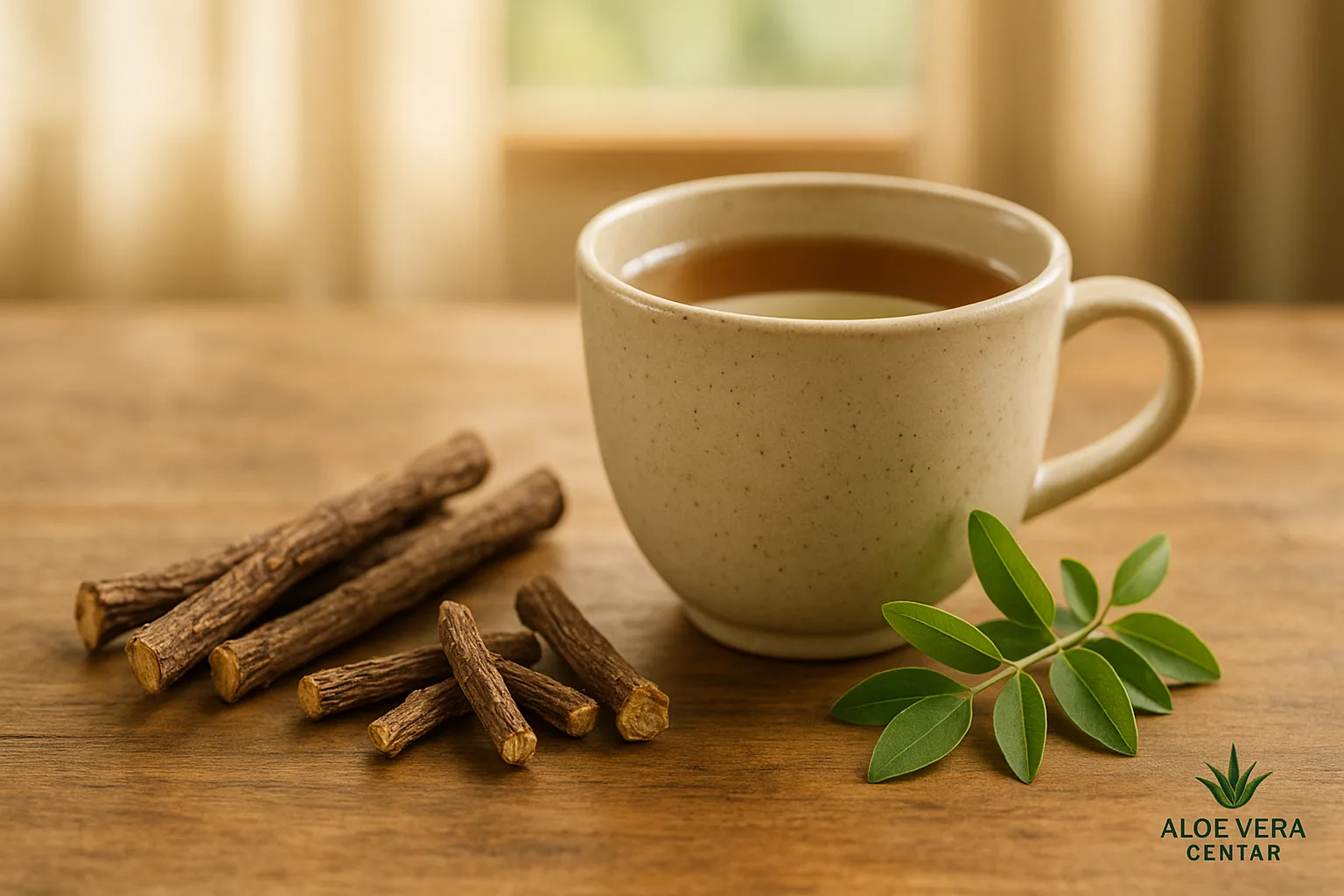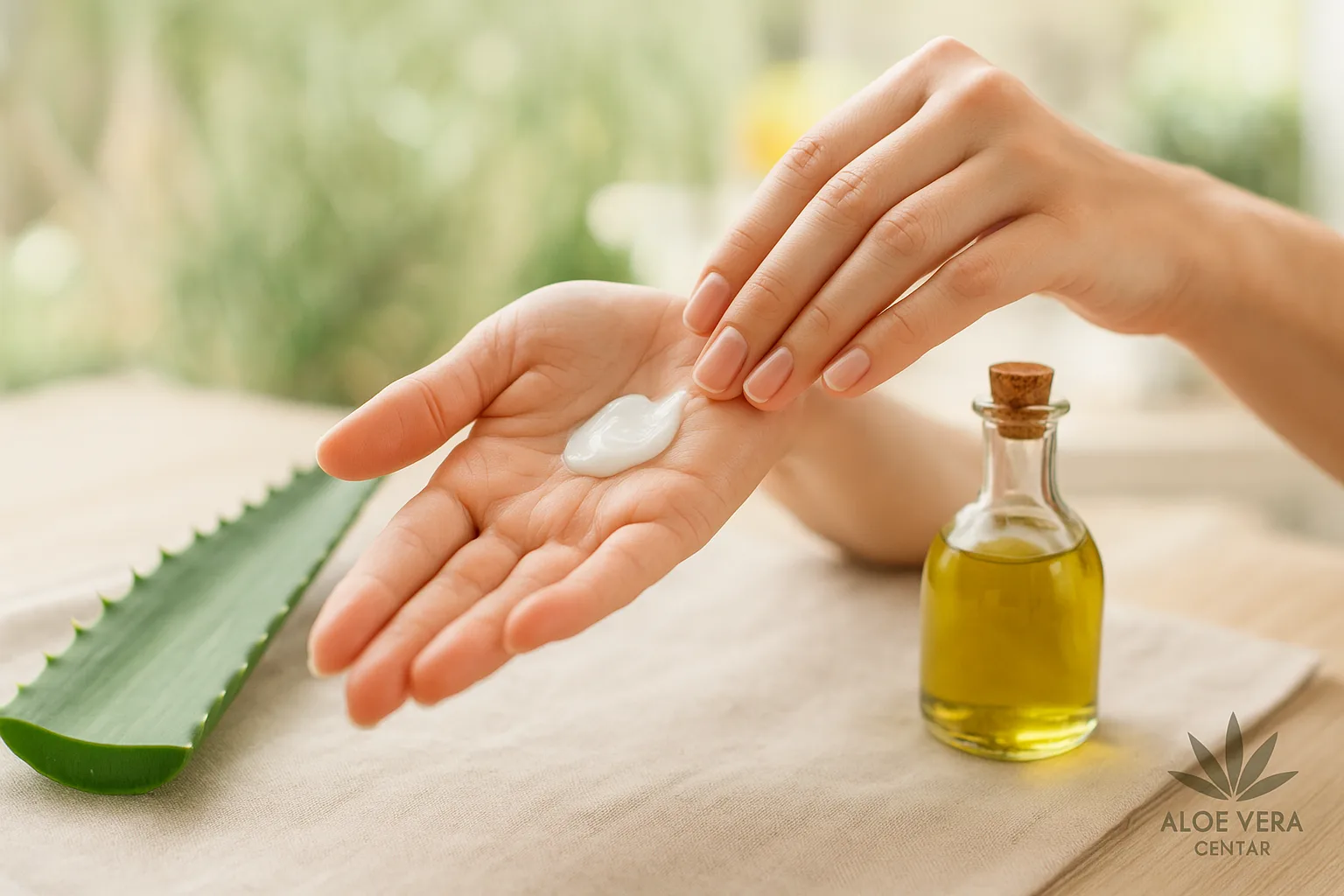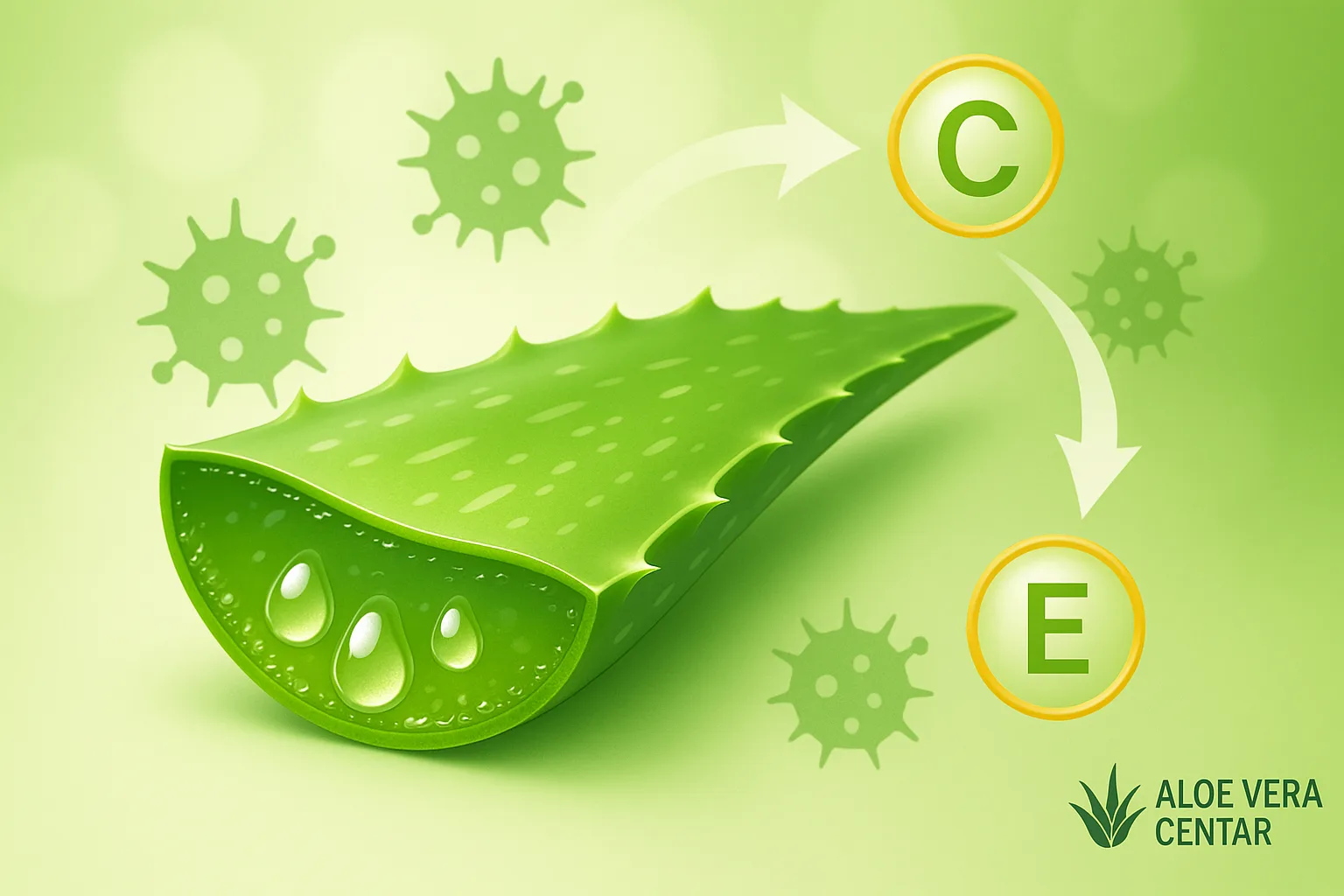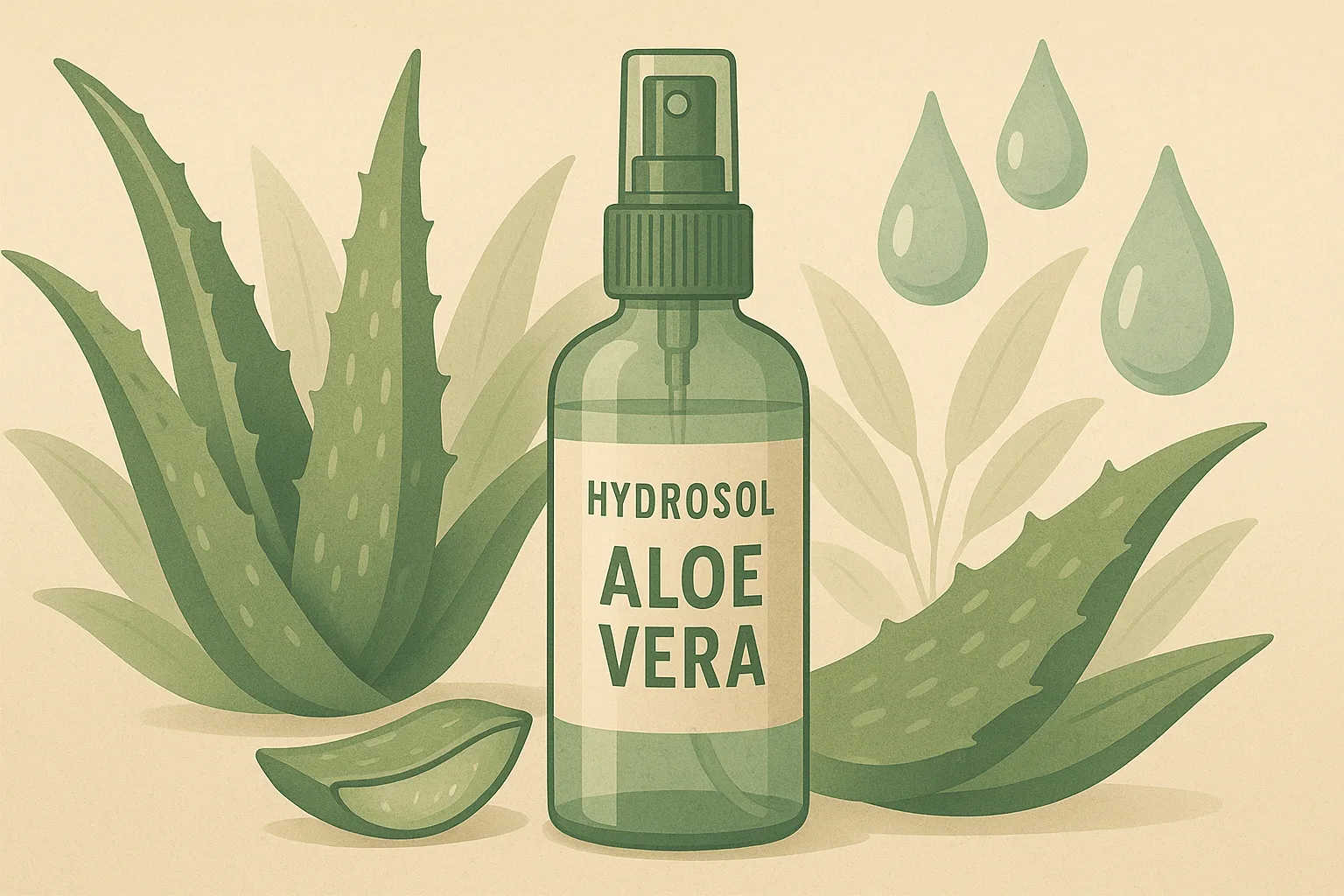
Aloe Vera and the Body: Hydrolat Form for Health and Skin Care
Aloe Vera and the Body: why the Hydrolat Form is an Interesting Option
Have you ever wondered what lies behind the popularity of aloe vera and how it specifically affects our body? Aloe vera and the body have long been in the spotlight for natural health and wellness enthusiasts, and there are multiple reasons for this: this plant is rich in antioxidants, vitamins, minerals, and numerous other beneficial ingredients that can contribute to our overall health. However, recently, a somewhat less known but very interesting form of aloe vera has been increasingly mentioned – the so-called hydrolat form.
Hydrolats, sometimes called floral waters, are obtained through the distillation process of various plants, resulting in a gentle, water-based extract rich in volatile components and aromatic compounds. While people are generally familiar with aloe vera gel or juice, the hydrolat form of aloe vera is slowly emerging in the market. In this article, we’ll explore why it might be special and what makes it so attractive for many who want to utilize the benefits of this exceptional plant more effectively.
Below you’ll learn how aloe vera hydrolat is produced, how it differs from classic aloe forms, what specific effects it can have on our body and skin, and how to incorporate it into your daily routine. We’ll also touch on topics such as the synergistic effect of aloe vera hydrolat with other dietary supplements or cosmetic products, including popular items from the Forever Living range. If you’re ready to learn something new and potentially improve your own approach to care and health, keep reading.
What is Aloe Vera Hydrolat?
Hydrolat is a by-product (or rather, co-product) that results from the distillation process of plant material – most commonly when essential oils are extracted from plants. With aloe vera, the process is similar: the leaves (or their inner part) go through a special distillation process that produces distilled “water” enriched with aromatic and bioactive components of the plant. Since aloe vera itself doesn’t contain much essential oil, producing aloe vera hydrolat can be more complex compared to some other plants like lavender or rose. However, when this process is carried out correctly, the result is a hydrolat containing specific aloe vera components in a gentle, water-based form.
Unlike classic juice or gel, which can be thicker and more concentrated, aloe vera hydrolat has a different texture – light, almost like water, usually with a very mild, natural scent. It’s not a replacement for gel but can be considered an additional option for those who value quick absorption and a gentle yet potent effect. Thanks to its light form, it can easily be used in sprays or tonics, as an ingredient in cosmetics, or even as a beverage (depending on the product and manufacturer’s recommendations).
Traditional Forms of Aloe Vera and Their Benefits
Before we delve into the hydrolat form of aloe, it’s worth mentioning how people have primarily used:
- Aloe vera gel – the thick, transparent inner leaf content characterized by numerous nutritional and healing ingredients, including vitamins (A, C, E, B-group), minerals (calcium, magnesium, zinc), amino acids, and enzymes.
- Aloe vera juice – liquid obtained by pressing or processing the gel, usually somewhat diluted and suitable for oral consumption (e.g., Forever Aloe Vera Gel and similar products). The juice is often used to support digestion and better nutrient absorption.
- Powder extract – obtained by drying and grinding aloe vera leaves or inner parts, used as an ingredient in dietary supplements or creams.
These forms have a range of proven effects on the body: they support skin health, can contribute to better digestion, and help maintain proper hydration and electrolyte balance. Some studies also speak of the anti-inflammatory and antioxidant properties of aloe (source: PubMed), making it very attractive for those seeking natural body care.
Therefore, aloe vera and the body are often associated with terms like “detoxification,” “immune support,” and “regeneration.” However, in recent years, there’s been increasing talk about the hydrolat form. This brings us to the question: what advantages does this particular form of aloe vera offer compared to the well-known gels and juices?
Benefits of Aloe Vera Hydrolat Form
Aloe vera hydrolat, as a gentle water solution, has several potential benefits:
- Quick absorption and light texture
Due to its watery structure, hydrolat is very easy to apply to the skin and absorbs quickly. If you use it orally (provided the manufacturer has indicated it as safe), it also absorbs quickly in the digestive system. The same ease of use can be practical for people with sensitive skin or digestion. - Gentle concentration of active ingredients
Hydrolat doesn’t contain high concentrations of some components like aloin (found in the outer leaf bark and can be irritating if consumed in larger quantities). Therefore, the risk of irritation is lower, and users with sensitive digestive systems or skin can better tolerate the hydrolat form. - Versatile use
Aloe vera hydrolat can be used as a facial tonic, an ingredient in hair or skin masks, added to baths, and even in room diffusers (if you want a gentle, fresh scent). If suitable for oral consumption, then also as a light drink or smoothie addition. This expands the range of ways we can utilize the beneficial ingredients of aloe. - Synergy with other products
Due to its mild composition and ease of mixing, hydrolat can be combined with other cosmetic or dietary products, whether creams, serums, oils, or supplements like Forever Arctic Sea or Forever Multi-Maca. This can enhance the overall experience and potentially boost the effect on body health.
How is Aloe Vera Hydrolat Produced?
The method of producing aloe vera hydrolat involves water distillation of fresh or frozen plant material. In the distillation kettle, the plant is heated at a specific temperature, and the steam passing through the plant takes aromatic and volatile components with it. This steam then passes into a condenser, where it cools and turns back into liquid – hydrolat. Unlike essential oils, which are “caught” in a separate container, hydrolat retains water-soluble components and tiny amounts of volatile oils, sometimes insufficient for extraction as essential oil but crucial for creating a gentle, fragrant, and therapeutically valuable extract.
Since aloe vera itself is known for its high water and gel content, manufacturers must very carefully choose methods and plant parts to ensure the authenticity and quality of the hydrolat. A quality product will usually have certificates confirming it’s a genuine hydrolat (and not, for example, water with added essences or synthesized aromas).
Hydrolat vs. Hydrosol
Sometimes the terms “hydrolat” and “hydrosol” are used interchangeably. Essentially, they refer to the same product, although there’s a small difference in terminology among manufacturers and experts – some claim that “hydrolat” includes slightly more essential oil components, while “hydrosol” is even milder. But in practical terms, both terms refer to aromatic water produced by distillation.
How Can Aloe Vera Hydrolat Affect the Skin?
Aloe vera has long been recognized as an excellent skin ally: its enzymes, polysaccharides, and vitamins can reduce irritation, redness, while simultaneously supporting hydration and regeneration of damaged cells. When we talk about aloe vera hydrolat used topically, it can provide:
- Hydration without greasy feeling: Unlike some creams or gels, hydrolat absorbs quickly, leaving skin fresh.
- Soothing effect on irritations: Mild but effective aloe concentration can help with sensitive or red skin.
- pH balance regulation: Hydrolats generally have a pH range similar to skin, so they can serve as a natural tonic.
- Help with acne: Thanks to the anti-inflammatory properties of aloe, hydrolat can be useful in caring for acne-prone skin.
Some use it as a refreshing spray during the day, especially in hot months or in air-conditioned spaces where skin loses moisture. Hydrolat can also be combined with a few drops of Forever Bee Propolis cream or other natural creams to create a personalized cosmetic preparation.
Aloe Vera Hydrolat in Diet and Dietary Supplements
Depending on the manufacturer and production method, some aloe vera hydrolats may be safe for consumption. However, before oral use, it’s very important to check the product declaration or consult with an expert. If the product is suitable for internal use, here are some potential benefits:
- Light digestive boost: Aloe vera can support healthy bowel function and normal peristalsis.
- Mild anti-inflammatory effect: Aloe vera hydrolat may contain components that help calm inflammatory processes.
- Good hydration: Additional liquid enriched with natural aloe vera ingredients can serve as a “mini-detox” drink.
- Synergy with other products: Hydrolat can be combined with Forever Aloe Vera Gel or other aloe-based drinks. This could, for example, be an interesting way to intake different forms of aloe and utilize potential synergistic benefits.
However, be aware that classic aloe vera juice or gel usually has a higher concentration of nutrients, so hydrolat comes more as an additional “touch” rather than the main source of beneficial components. If you’re seriously considering improving nutrition and supporting your body, consider combining hydrolat with products like Forever Arctic Sea (rich in omega-3 fatty acids) or Forever Daily multivitamin complex. This way you can cover a wider spectrum of nutrients.
Precautions when Using
Like any product, aloe vera hydrolat isn’t immune to possible contraindications. Pay special attention to:
- Label check: Some manufacturers may add preservatives, alcohols, or fragrances to extend the product’s shelf life. Pay attention if you’re allergic to any ingredient.
- Storage: Hydrolats are sensitive and prone to spoilage, especially if they don’t contain preservatives. Store the product according to instructions, usually in a cool, dark place.
- Oral consumption: Don’t consume aloe vera hydrolat unless explicitly indicated on the package, or if it’s not produced for that purpose.
- Individual reactions: If you notice redness, itching, or digestive issues, stop using and, if necessary, consult a doctor.
Generally speaking, most people tolerate aloe vera well in various forms, but the rule “start slowly and monitor body reactions” always applies.
Comparison of Hydrolat Form and Forever Aloe Vera Gel
Forever Aloe Vera Gel is one of Forever Living’s most well-known products. It’s a stabilized juice or gel that preserves important aloe vera nutrients. This gel is thicker, rich in polysaccharides, vitamins, and minerals, and is usually consumed in amounts of, for example, 60 to 120 ml daily as a dietary supplement. It can also be applied to the skin as a topical gel.
On the other hand, aloe vera hydrolat is:
- Thinner and watery: Which means it absorbs much faster when applied to the skin, and when consumed orally, it may have a very mild taste.
- Lower concentration of active substances: Useful for people with sensitive stomachs or skin, but perhaps less “powerful” for those targeting intensive aloe vera support.
- More focused on aromatherapy and cosmetic segment: It’s much easier to use in cosmetic recipes, as a face tonic or body spray.
That’s exactly why these two forms don’t have to compete – you can use them simultaneously. For example, you can drink Forever Aloe Vera Gel to support digestion, while using aloe vera hydrolat to spray your face or prepare homemade cosmetic recipes. This way you’ll get maximum benefit from the plant inside and out.
Aloe Vera and the Body: Additional Benefits and Research
Aloe vera is known for a range of potential health benefits. Among them are:
- Immune system support: Thanks to enzymes and polysaccharides, aloe vera can support normal immune system function. Some aloe components could help the body better respond to various challenges.
- Hydration and electrolyte balance: Contains minerals like potassium, calcium, and magnesium that can help maintain balanced electrolyte levels, which is especially important in hot weather or during intense exercise.
- Potential digestive support: Some research shows that consuming aloe vera juice can help with occasional digestive issues like bloating or mild inflammatory processes in the intestines.
- Skin care and regeneration: Whether applying hydrolat or gel, skin can benefit from the soothing and hydrating properties of aloe vera. It’s rich in vitamin E and enzymes that help gently remove dead skin cells.
- Antioxidant properties: Numerous antioxidants, including vitamins A, C, E, beta-carotene, and others, help the body fight oxidative stress.
Although aloe vera is attributed with other effects, it’s important to keep in mind that reactions and results can vary from person to person. That’s why it’s good to approach this plant with moderation and realistic expectations, and consult an expert for specific health issues.
How to Incorporate Aloe Vera Hydrolat into Daily Routine
There are countless ways to use the hydrolat form of aloe vera. Here are several practical suggestions:
- Face tonic: After cleansing the skin, spray aloe vera hydrolat on your face or apply it with a cotton pad. For additional care, you can then apply an aloe vera cream or serum.
- Body or hair spray: You can pour hydrolat into a spray bottle and use it as a refreshing mist. It’s an excellent solution in summer months or after workout.
- Ingredient in DIY cosmetics: If you like making your own masks, scrubs, or creams, aloe vera hydrolat can serve as a hydrating base.
- Aromatherapy: Although aloe vera isn’t aromatic like lavender, some types of hydrolats have a mild, fresh note. You can combine it with other hydrolats (rose, chamomile) for personalized blends.
- Drink addition (if edible): If your aloe vera hydrolat has an edibility certificate, you can add a few teaspoons to water, tea, or smoothie. Don’t expect intense flavor, but you’ll get another way to “wake up” with aloe vera.
Tips for Buying Quality Hydrolat
As the market is flooded with various products, it’s crucial to pay attention to quality. Here are some guidelines:
- Verified manufacturers: Choose brands that have transparent labeling and certificates (e.g., ECOCERT, USDA Organic, etc.).
- Short shelf life: Real hydrolat usually has a shorter shelf life (6-12 months) if it doesn’t contain preservatives. If you see that the product is valid for years, it might not be pure hydrolat.
- Name “Aloe Barbadensis Leaf Water” or similar: This is the INCI (international name for cosmetic ingredients) that indicates water obtained from aloe vera leaf. Make sure the label doesn’t just say “water” with added aroma.
- Packaging method: Hydrosols are typically packaged in dark glass bottles to protect them from light. If they come in plastic bottles, check for UV protection and material safety (e.g., high-quality PET bottles).
FAQ (Frequently Asked Questions)
1. How is Aloe Vera Hydrosol Different from Juice or Gel?
Hydrosol is much thinner, almost like water, with a lower concentration of certain active ingredients. Juice and gel typically contain more polysaccharides and other nutrients, making them more potent for internal consumption. However, hydrosol is exceptionally practical for cosmetic and aromatherapy use, and for people with very sensitive skin or digestion.
2. Can I Use Aloe Vera Hydrosol on Children?
Generally, hydrosols are gentler than essential oils and are often used in children’s products. However, before use, it’s always advisable to check the child’s age, product label, and consult with a pediatrician, especially if the child has sensitive skin or allergies.
3. How Often Can I Apply Hydrosol to My Face?
You can use it multiple times a day, depending on your skin’s needs. Some prefer applying it morning and evening, others every few hours to refresh the skin during hot days or after staying in air-conditioned spaces. Monitor your skin’s reaction and adjust the frequency according to how it feels.
4. What if I Want to Use both Hydrosol and Forever Aloe Vera Gel?
No problem! Even though they are different “forms” of aloe vera, you can combine them. For example, drink the recommended amount of gel in the morning and use the hydrosol as a toner or face spray. This way, you’ll maximize all the benefits aloe vera offers both inside and out.
Conclusion and Call to Action
Aloe vera once again proves to be a plant worthy of our attention – not just in the form of classic gel or juice, but also in the increasingly popular hydrosol form. Light, gentle, and versatile, this aloe vera water offers a unique opportunity for refreshing, hydrating, and soothing both the skin and body when used in dietary applications (provided it’s intended for that purpose). For those looking to try something new and innovative, aloe vera hydrosol could be a real discovery.
If you’re curious and want to explore the rich selection of Forever Living products, don’t forget that you can get a discount by visiting the official Forever offer. This will give your beauty and wellness routine an extra boost while providing your body with numerous beneficial nutrients. Explore, experiment, and discover your own way of integrating aloe vera into your daily life!
This content is not a substitute for professional medical advice. For specific health concerns or questions, please consult a healthcare professional.

